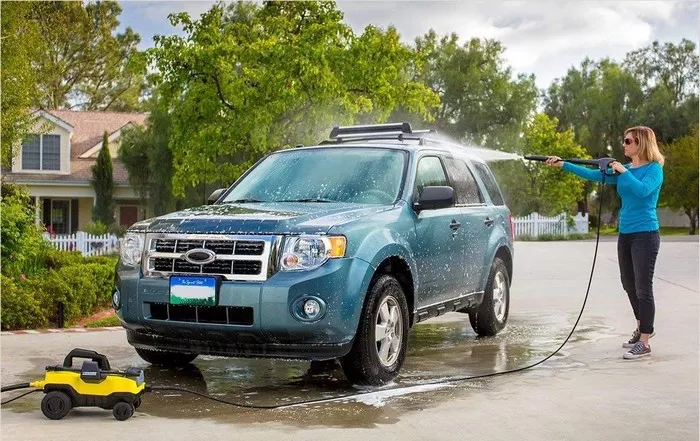Power washing, with its high-pressure water jets, can be an efficient and effective method for cleaning various surfaces, but when it comes to vehicles, the question arises: Is it safe? While power washing can quickly remove dirt, grime, and even some stubborn stains from your car’s exterior, it also carries potential risks if not done correctly. In this comprehensive guide, we’ll explore the safety considerations, best practices, and potential hazards associated with power washing your car.
Understanding the Risks
Power washing a car involves directing pressurized water at its surface, which can potentially cause damage if not handled properly. The high pressure can force water and debris into vulnerable areas, such as door seals, window seals, and vents, leading to water intrusion and potential damage to sensitive electronic components. Additionally, if the water pressure is too high, it can strip paint, remove wax coatings, and even dent or chip the vehicle’s body.
Best Practices for Safe Power Washing
To minimize the risks associated with power washing your car, it’s essential to follow these best practices:
1. Use the Right Equipment: Invest in a power washer specifically designed for automotive use, preferably one with adjustable pressure settings. Lower pressure settings are generally safer for car surfaces.
2. Maintain a Safe Distance: Keep the nozzle of the power washer at least 1 to 2 feet away from the car’s surface to prevent damage from excessive pressure.
3. Use the Correct Nozzle: Choose a nozzle with a wide spray pattern to distribute the water evenly and reduce the risk of concentrated pressure in one area.
4. Prep the Surface: Rinse the car thoroughly with plain water before applying any detergent or using the power washer. This helps loosen dirt and debris, making it easier to remove without excessive pressure.
5. Use Gentle Detergents: Opt for automotive-specific soaps or detergents designed for use with power washers. Avoid using harsh chemicals or household cleaners, as they can damage the car’s paint and finish.
6. Work Methodically: Start from the top of the vehicle and work your way down, rinsing each section thoroughly before moving on to the next. This prevents dirt and debris from being pushed onto already cleaned areas.
7. Avoid High-Pressure Areas: Be cautious around sensitive areas such as door handles, mirrors, and emblems, where high-pressure water jets can cause damage or dislodgment.
Potential Hazards to Consider
Despite taking precautions, there are still potential hazards associated with power washing a car:
1. Paint Damage: High-pressure water jets can strip paint, especially if the car’s paint is already compromised or if the pressure is too high.
2. Water Intrusion: Forceful water spray can penetrate seals and seams, leading to water intrusion and potential damage to interior components.
3. Surface Scratching: Dirt and debris caught between the car’s surface and the nozzle can scratch the paint, especially if the nozzle is too close or if abrasive materials are present.
Conclusion
While power washing can be a quick and efficient way to clean your car, it’s essential to approach it with caution. By using the right equipment, maintaining a safe distance, and following best practices, you can minimize the risks and safely power wash your vehicle. However, if you’re unsure or uncomfortable with power washing, it’s always best to seek professional car detailing services to ensure your vehicle remains in optimal condition.
FAQs
Q1: Can I use a regular pressure washer to wash my car?
A1: While it’s technically possible to use a regular pressure washer for car washing, it’s not recommended. Regular pressure washers typically have higher pressure settings, which can damage car surfaces if not used carefully. It’s safer to invest in a pressure washer specifically designed for automotive use, with adjustable pressure settings to avoid potential damage.
Q2: Is it safe to power wash the engine bay of my car?
A2: Power washing the engine bay can be risky, as water intrusion can damage sensitive electronic components and cause electrical malfunctions. If you choose to clean the engine bay, it’s essential to take precautions such as covering electrical components with plastic bags or waterproof covers and using low-pressure settings to minimize the risk of water damage.
Q3: Can power washing remove wax and sealant from my car’s paint?
A3: Yes, power washing can remove wax and sealant from your car’s paint, especially if the pressure is too high or if harsh detergents are used. It’s important to use gentle detergents specifically formulated for automotive use and to avoid high-pressure settings to preserve any protective coatings on your car’s paint. Additionally, reapplying wax or sealant after washing can help maintain the paint’s shine and protection.

